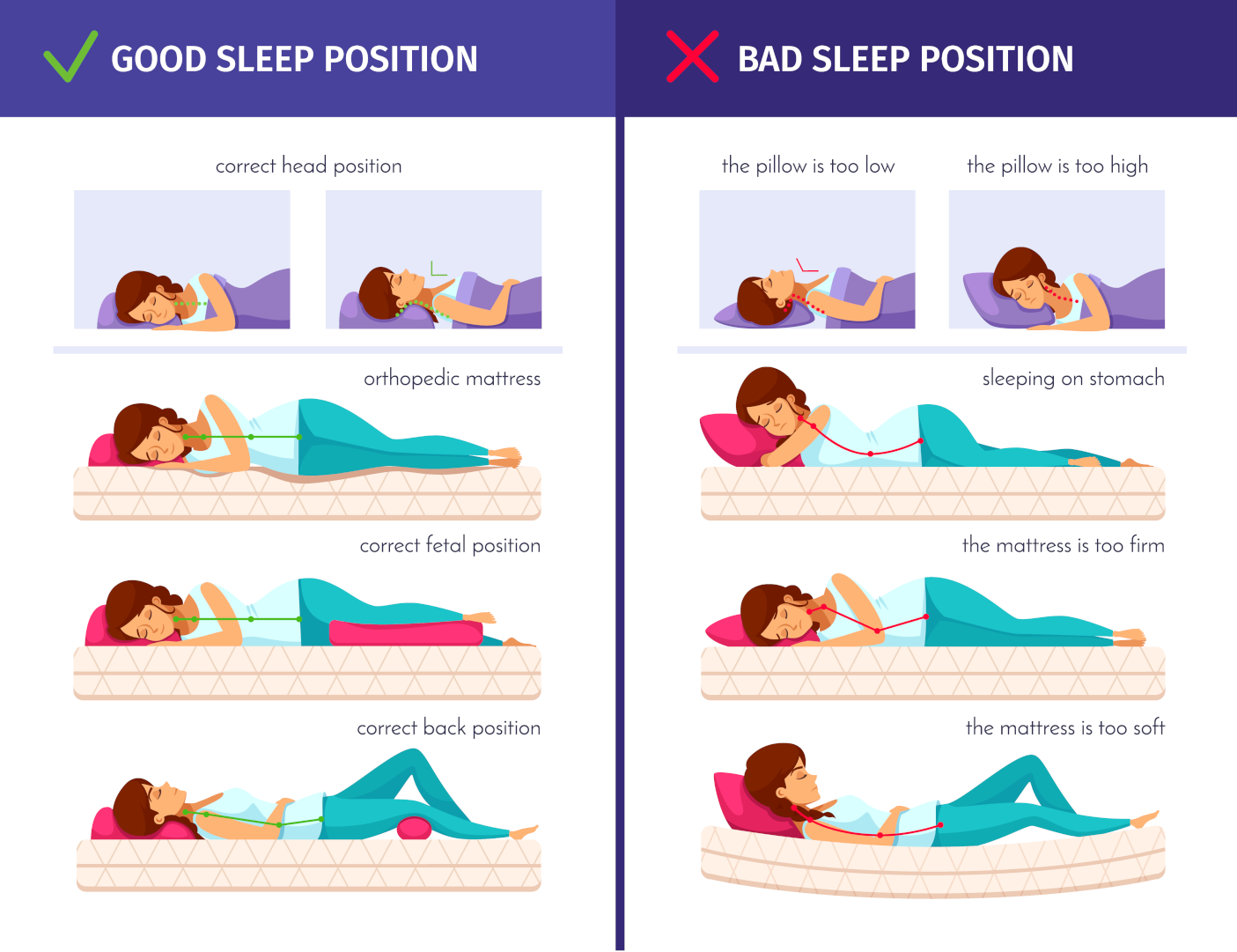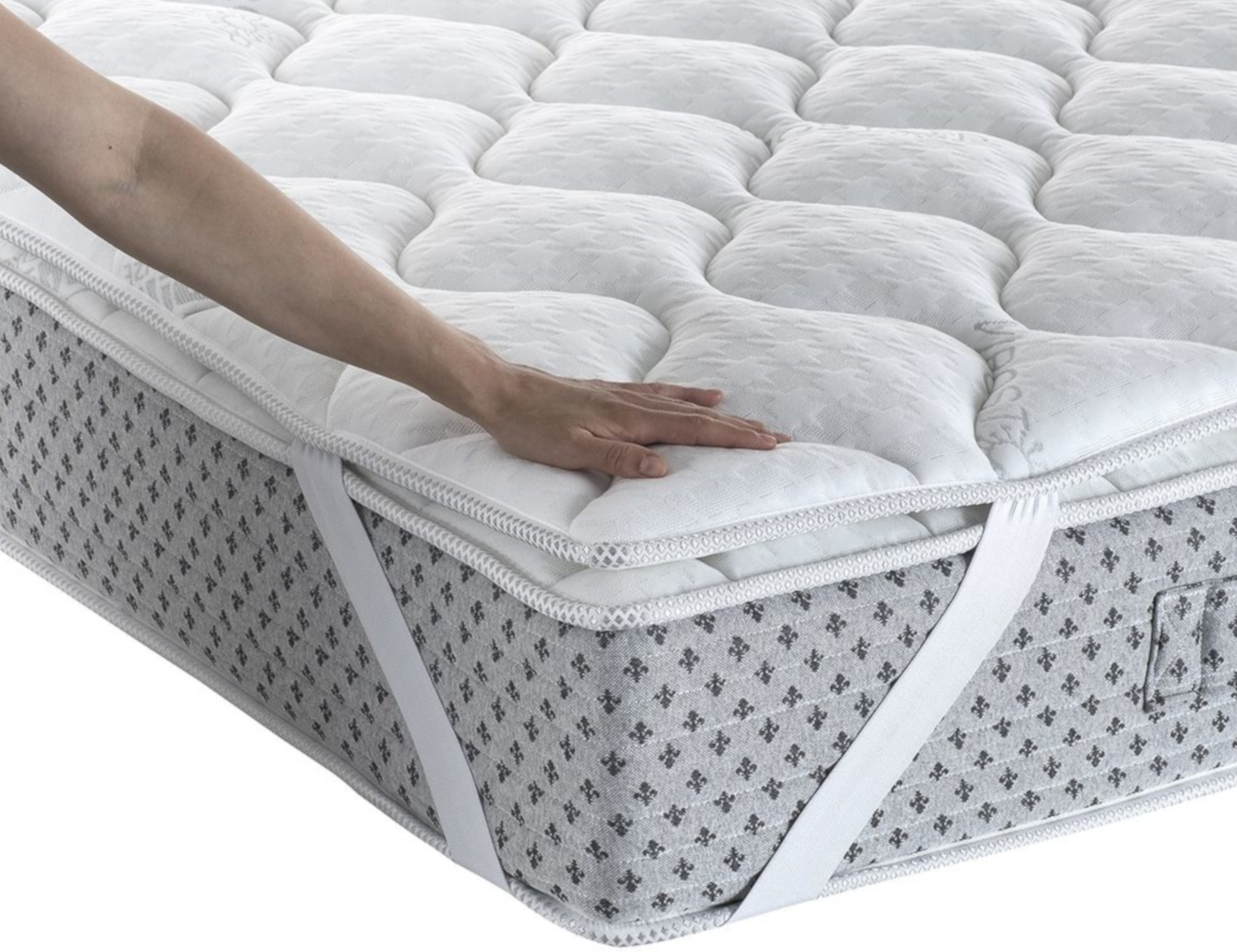Key Takeaways
- Back-sleeping (supine) minimizes mechanical sleep creases and morning puffiness.
- Side-sleeping is acceptable with the right pillow height (≈12–15 cm) to keep the neck neutral and the cheek off-compression.
- Pillow & case matter: medium-support pillow + low-friction case (silk/satin) reduces shear forces on facial skin.
- Mattress feel: medium with a soft topper (4–7 cm) to relax muscles and improve overnight fluid clearance.
- Environment: dark, cool (16–19 °C), quiet room supports melatonin and skin recovery.
Posture: Back vs Side (and What to Avoid)
Best: Back-sleeping (supine)
- Face isn’t compressed into fabric → fewer sleep creases over time.
- More uniform overnight fluid distribution → less morning edema.
- Add a small pillow under knees to relax lower back and help keep position.

If you sleep on your side
- Use a taller pillow (≈12–15 cm) to keep the neck in line with the spine.
- Position cheek so it does not collapse into the pillow edge; avoid deep fabric folds.
- Consider a side-sleeper contour (“wave”) pillow to cradle the head without facial compression.

Avoid: Prone (stomach) sleeping
- Highest cheek compression and neck strain; strongly associated with morning lines and puffiness.
Pillows: Height, Support, and Shape
- Support: medium firmness; too soft → sink/edema; too hard → facial pressure points.
- Height: back-sleepers lower (keep chin off chest); side-sleepers higher (≈12–15 cm).
- Shape: cervical “wave” or gentle contour helps neutral neck. Memory foam is fine if you’re not face-planting into it.
- Width: ≥50 cm to reduce edge compression on cheek.
Mattress & Topper
- Target feel: medium with a soft topper 4–7 cm to release muscle tone, aiding nocturnal fluid clearance.
- Overly firm surfaces raise muscle guarding and can worsen morning puffiness.

Head & Neck Alignment
- Neck in line with spine; nose points straight up (back) or straight ahead (side).
- Avoid high-stacked pillows and chin-to-chest positions (accentuate submental folds).
Pillowcase Fabrics
- Low-friction cases: silk or satin reduce shear and creasing; budget option: fine microfiber/micro-satin.
- Keep cases smooth and dry; bunching creates localized compression lines.
Night Routine for Less Puffiness
- Warm shower → mild vasodilation and relaxation.
- Use a light to medium moisturizer; heavy occlusives or thick night masks can trap fluid → morning swelling.
- Finish liquids ≥1–2 h before bed if prone to edema; avoid late-salty meals.
Nasal Breathing
- Preferred during sleep: supports humidified airflow and reduces mouth dryness (which can worsen perioral lines).
- If mouth-breathing or snoring is routine, discuss nasal patency or positional therapy with a clinician.
Hand Position
- Hands by sides or loosely across torso.
- Avoid pressing a hand under cheek/head—this distorts jawline and creases the face.
Light & Temperature
- Dark room: supports nocturnal melatonin release (a sleep hormone with antioxidant roles in skin biology).
- Cool air (16–19 °C): commonly improves sleep continuity and morning skin feel.
- Optional: humidifier in dry/heated seasons to reduce TEWL (transepidermal water loss).
Sleep Schedule & Skin
- Target 7–8 hours with a regular bedtime (ideally before 23:00).
- Short, irregular sleep correlates with dull skin tone and more morning swelling in many individuals.
Note on Pigmentation & Vitiligo
Good sleep won’t “create” pigment, but it supports overall recovery, mood, and adherence to therapy. Three practical points:
- Morning edema makes borders look sharper and color mismatch more obvious; reducing puffiness improves appearance even without changing pigment.
- Circadian hygiene (dark nights, regular sleep window) helps synchronize daily routines for NB-UVB or excimer 308 nm sessions and topicals (keep spacing rules).
- Photoprotection still essential: sleep habits do not replace sun protection or medical therapy. For diagnosis and monitoring, see Wood’s lamp & dermoscopy.
Quick FAQ
Is silk pillowcase a cure for wrinkles? No—think of it as reducing friction and creasing, not erasing lines.
Does side choice matter? If you must side-sleep, keep the neck neutral and avoid burying the cheek; alternate sides to distribute pressure.
Can I use thick night creams? If you wake puffy, try a lighter formula and finish fluids earlier.
Disclaimer
Information here is educational and not a substitute for personalized medical advice. If you have sleep disorders, facial pain, or dermatologic conditions, consult a qualified clinician.
